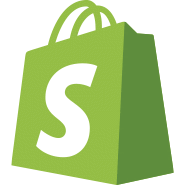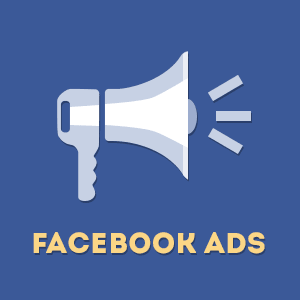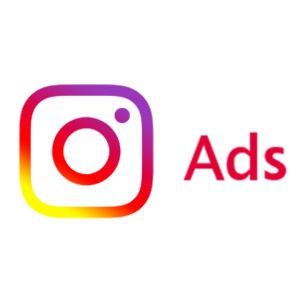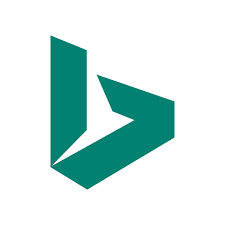My Custom Dental Veneers Business Made $10K In The First Month
Hello! Who are you and what business did you start?
Hey guys, my name is Elias and I am the founder of Dintle - we help people who can’t afford expensive dental procedures to have more confident smiles with snap-in veneers.
What makes us unique is that we do not outsource (because we have our own dental lab right here in San Diego, CA) and we 100% mill our veneers out of composite resin rather than using the compressed plastic method that most labs use. This helps us make an extremely realistic snap-in veneer - which is incredibly important for customers.

What's your backstory and how did you come up with the idea?
This was a culmination of decades of working in marketing and building the skillset to make it work. Like they say, overnight success stories take years.
Dintle really started as a project to help my dad’s business out. He had been a dental tech for 30 years prior for local dentists and I wanted to somehow use my knowledge to help him get past working long hours to live paycheck to paycheck.
When I was kid, my brother and I would stay at his office after school waiting to go home as he worked late and I very vividly remember him having a poster of a red Lamborghini Countach as his life goal. Dintle was my way of helping him finally reach that.
Fast forward another 20 years and I’ve built up my experience by working for CRO and direct-response ad agencies as soon as I dropped out of college. Over those years I learned how to design, how to code, how to run paid media campaigns, how to video edit, how to film myself, and how to manage business finance to be profitable.
All of these skills led to me being able to ultimately be a one-man band when it came time to create my own business.
The COVID pandemic is what really kicked things off. I was sitting at home with all the time in the world and I thought, “this is it. If there’s ever a chance to start your own thing, it’s right now.”
Pick a niche that you are good at rather than chasing trends or money. Too many have shiny-object syndrome and drop what they know because they see someone else succeeding.
Take us through the process of building the first version of your product.
The very first veneers we made were with a borrowed CAD/CAM machine from a dentist office next door. We took our own impressions and tested and tested and tested until we got the snap-in veneers down to something we felt were a great product.
We then were able to convince a couple of dentists to try our veneers as a temporary product for their clients who were in-between implant procedures and needed to cover missing teeth for the time being. It was that moment that we realized we had something good on our hands. If dentists were now asking us to make temps for their clients, we could sell these.
I set out to design and build the website myself on Shopify, set up the business legally, and all of our first ads were self-filmed and ran on Facebook/Instagram. I sourced branded impression kits, carrying cases, shipping boxes, and got the product dialed in and paid for it all on my personal credit card.
We put the ads live on Facebook and it was an instant hit! Our very first month did $10,000 in revenue and we immediately cycled that money back into growth.
It was time to get serious so we took out a loan for our very own CAD/CAM machine and got to work.
Describe the process of launching the business.
Launching Dintle was quick and dirty. The entire business was set up and running in less than 30 days with less than a $5k investment on my credit card.
I mentioned before that everything (I mean everything) was created by myself - from the website, to the brand design, to the product designs, the box templates, the static ads, the video ads, the media buying, etc.
I sourced the shipping and packaging boxes as well as the carrying-cases and impression kits from suppliers on Alibaba and worked with them to customize everything to my needs.
For those that haven’t done this process before, make sure you negotiate. Suppliers will always try to overcharge and increase MOQs but you can push back here.
The absolute best way to start a business is to start it fast. Don’t waste time building a product or app unless you’ve already tested your marketing channels to see if there even is any demand or customers that are easy to find out there.
This is something that took me too long to realize from many failed start-ups that line the road behind me.
Before I even placed any inventory orders, I spent $100 on ads per day to the website to make sure there were any buyers out there. The orders that came in I offered to refund and make for free when we were ready.
Since launch, what has worked to attract and retain customers?
Direct response social media advertising. It’s no longer enough to post an ad saying “here’s our thing, buy it” - you need to dig into hooks that draw in your potential customer. What is it that is going to get them to invest - because our products are not cheap. It’s one thing to be selling a $20 product on Meta/TikTok but a completely different game when your minimum purchase is $600+.
Introducing payments via installments was key to making sales. Nearly 70% of our customers opt to pay in installments, which makes sense for the price point.
From there it is about optimizing your sales funnel to be as smooth as possible. In the early days I would spend hours watching HotJar recordings to readjust my pages when I saw a user get stuck or back out. This type of detail is how you break out above the competition.
Then focus on the ads. This part is scary because to get started you have to risk your own money with your fingers crossed that it all backs out, but once you have the right hook that captures your customer base, your ad metrics start looking like this:

How are you doing today and what does the future look like?
Scale city! We are in the process of doubling the number of orders we can handle each day. This is a bit of a complicated process for us because each item we make is done by hand, so staffing, space and equipment are hard needs to expand.
We are in a place where our return on ad spend is consistently at 3x our average order value (minus COGs, payroll and other business expenses) which is the sweet spot that our business runs well at.
Ultimately, the goal is to move away from a reliance on media spend for customer acquisition - which, for us, means to invest more into long-term SEO and customer referrals, so we can have consistent growth regardless of the ups-and-downs of social media traffic.
We will also be expanding into more product offerings, which include night-guards, retainers, partial dentures and sleep-apnea devices to become a well-rounded online direct-to-consumer dental lab.
Just start. It doesn’t matter if you actually have the product ready or built or any inventory at all - just find out if you can sell it to someone or not.
Through starting the business, have you learned anything particularly helpful or advantageous?
A lot of what I learned in building a business came down to risk and stress management. There are a lot of moments in growth that feel like a gamble, especially when managing your own inventory and employee hiring. Anything from increasing ad spend, putting in larger inventory orders to prepare for planned scale, hiring new employees to handle future orders, etc. It all comes down to having to spend or take on debt in the hope that your plan works out the way you have planned it.
That takes a toll on you in high growth phases of your business. You are putting all your finances on the line and taking a risk and could lose it all. Then when it works, you have to do it all over again. Multiple times in a row.
I also learned how to foster employee growth. Not every person you hire is on the same level as each other, but everyone has potential - it’s up to you to help them grow into that and see that. However, you can’t force it out of someone in anger - which is where so many “bad boss” stories come from.
Be nice, be kind and be a shepherd, and your company will benefit from it.
Outside of that, pick a niche that you are good at rather than chasing trends or money. Too many have shiny-object syndrome and drop what they know because they see someone else succeeding.
What platform/tools do you use for your business?
We are a very straightforward business when it comes to tools. Shopify covers 90% of everything we do, from shipping to order management, payments, etc.
The actual lab work is done with Zirkonzahn machines and software for the veneer milling and production.
Ad channels are all done in-platform, we don’t use any third party tools or automations or AI for ads. Everything is old school and managed with a simple process.
What have been the most influential books, podcasts, or other resources?
This is going to be a hot take, but I find that entrepreneur books and podcasts are a waste of time. These are almost always designed to be entertainment for dreamers while the doers are out there learning by actually doing.
Advice for other entrepreneurs who want to get started or are just starting out?
Just start. Pick a product and start to sell it right now. It doesn’t matter if you actually have the product ready or built or any inventory at all - just find out if you can sell it to someone or not. If you can’t move on to the next.
Test until something clicks and THEN start to build it out.
Where can we go to learn more?
If you have any questions or comments, drop a comment below!

Download the report and join our email newsletter packed with business ideas and money-making opportunities, backed by real-life case studies.

Download the report and join our email newsletter packed with business ideas and money-making opportunities, backed by real-life case studies.

Download the report and join our email newsletter packed with business ideas and money-making opportunities, backed by real-life case studies.

Download the report and join our email newsletter packed with business ideas and money-making opportunities, backed by real-life case studies.

Download the report and join our email newsletter packed with business ideas and money-making opportunities, backed by real-life case studies.

Download the report and join our email newsletter packed with business ideas and money-making opportunities, backed by real-life case studies.

Download the report and join our email newsletter packed with business ideas and money-making opportunities, backed by real-life case studies.

Download the report and join our email newsletter packed with business ideas and money-making opportunities, backed by real-life case studies.















